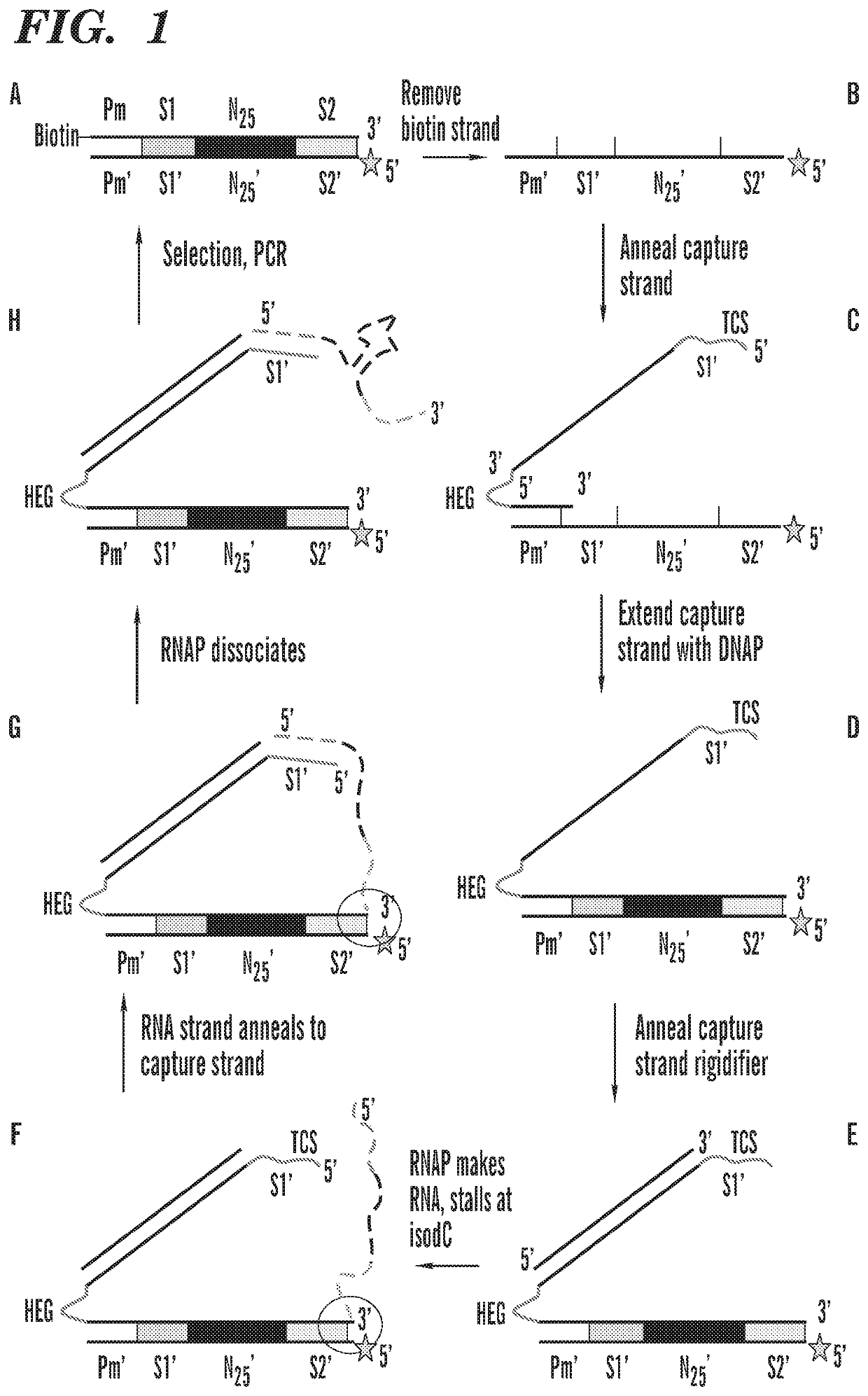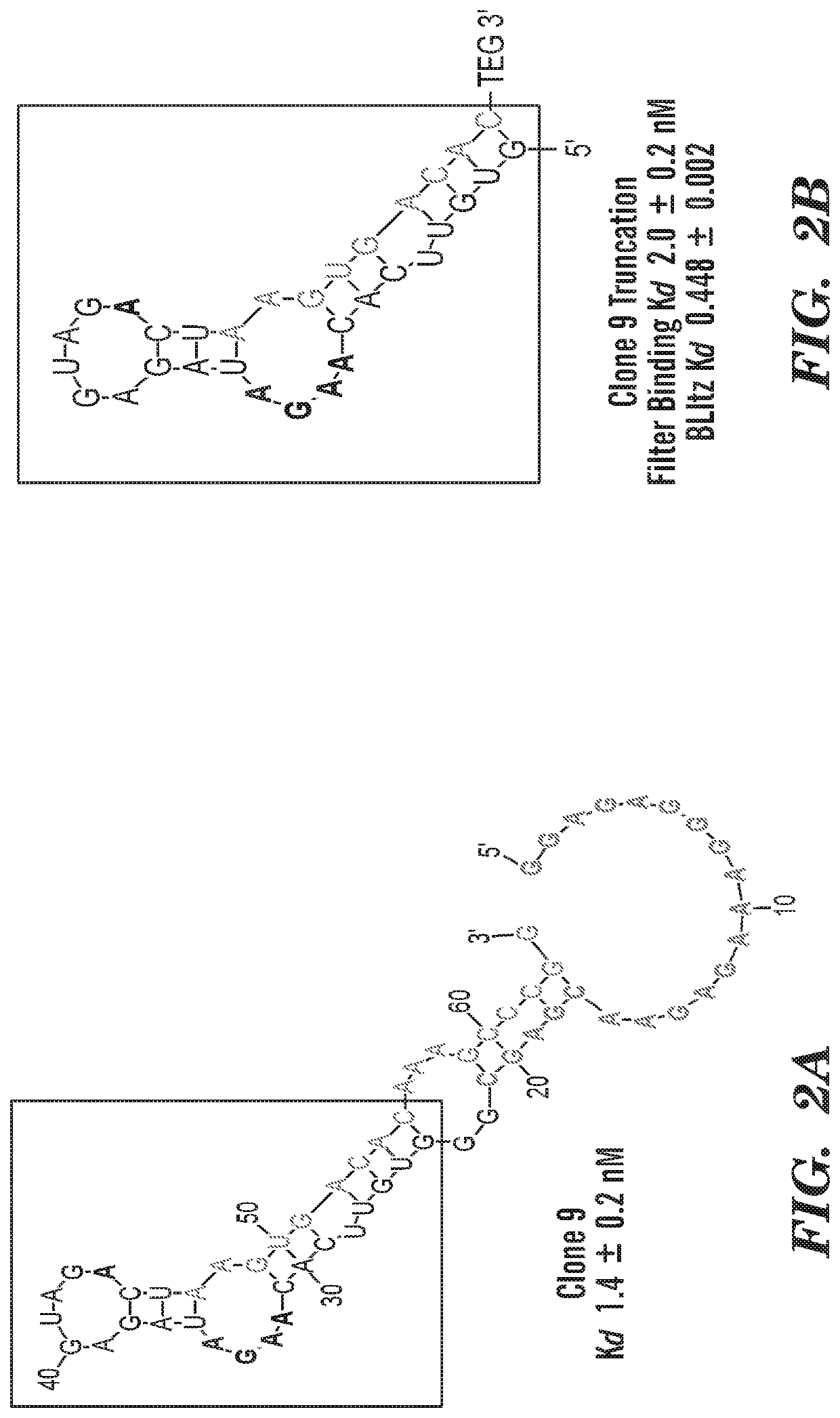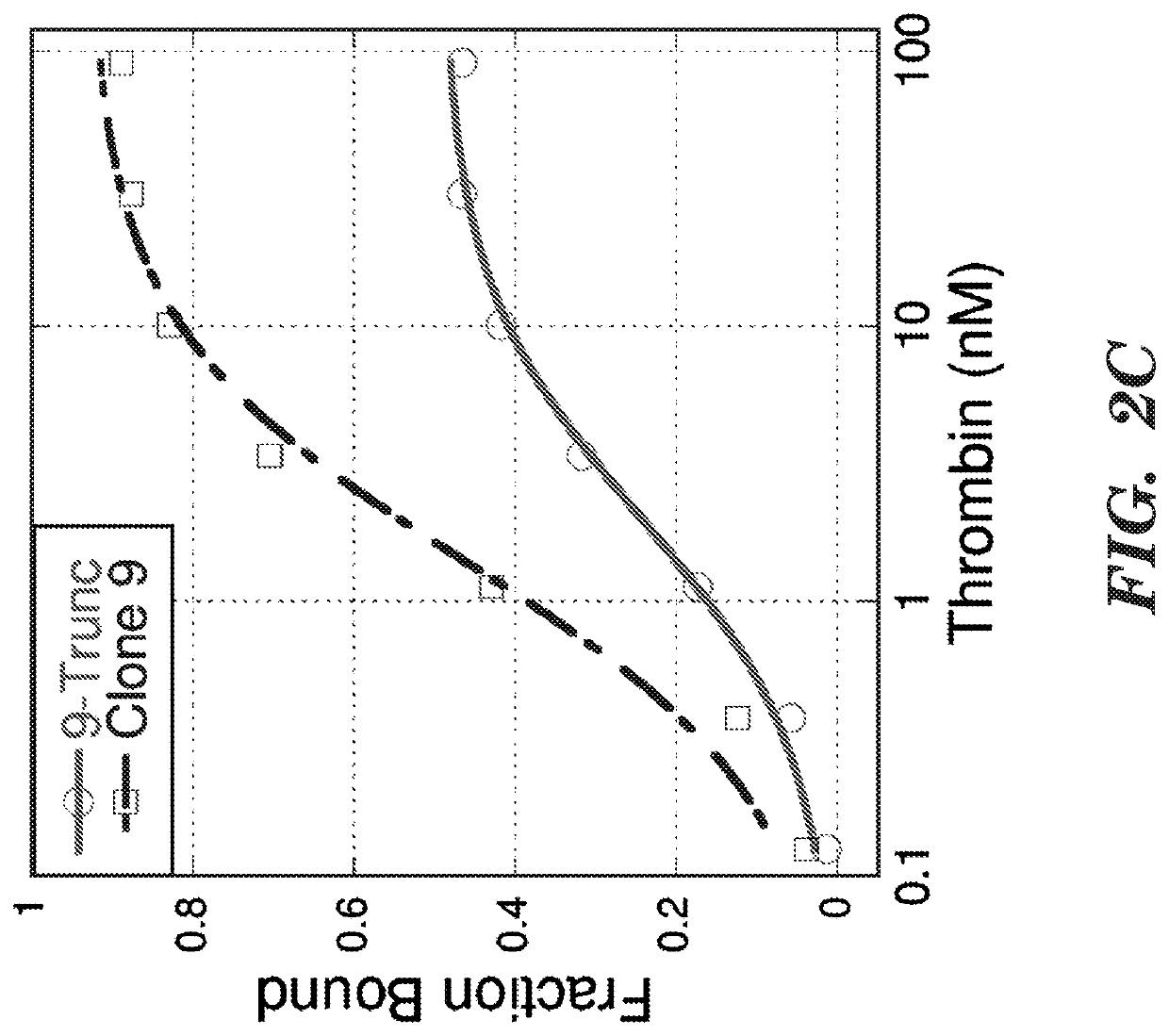DNA display of folded RNA libraries enabling RNA-selex without reverse transcription
- Summary
- Abstract
- Description
- Claims
- Application Information
AI Technical Summary
Benefits of technology
Problems solved by technology
Method used
Image
Examples
example 1
onstruction
[0054]A starting random double stranded DNA (dsDNA) library was produced by standard PCR of a synthetic random single stranded DNA (ssDNA) library using a biotinylated forward primer and isodC reverse primer using vent-exo DNA polymerase (refer to Table 2 for sequence information). A 200 μl PCR reaction consisted of 85 pmol biotinylated forward primer, 80 pmol isodC reverse primer, 5 pmol negative strand template, 1× thermopol buffer, 4 units Vent(exo-) DNA polymerase, 200 uM each dNTP and cycling at 95° C. for 60 seconds followed by 6 cycles of 95° C. for 30 seconds, 57° C. for 30 seconds, and 72° C. for 10 seconds. Following PCR amplification, the reaction was quenched by addition of 5 μl of 0.5 M EDTA and 25 μl of 4 M NaCl. To remove the biotinylated strand, the crude PCR product was incubated with 0.28 mg (70 μl) hydrophilic streptavidin magnetic beads for 30 minutes. The beads were washed twice with wash buffer (20 mM Tris pH 8, 500 mM NaCl) and then resuspended in 4...
example 2
election with Spiked Library
[0057]The spiked NheI-containing sequence was selected by binding to a short complementary sequence. Briefly, the transcription reaction (or non-transcribed reaction in the negative control) was diluted into 50 μl with water and incubated with 50 nM of the biotinylated complementary 15mer for 10 minutes at 37° C. and then mixed with 0.1 mg hydrophilic streptavidin magnetic beads for 20 minutes. The supernatant was removed and the beads were resuspended in 30 μl elution buffer (20 mM Tris pH 8, 50 mM NaCl, 10% Tween-20, 150 ug / ml BSA) and placed in a 70° C. dry bath for 5 minutes, after which the supernatant was used in a PCR amplification reaction.
example 3
Selection
[0058]The RNA-displayed DNA library was selected for binding to biotinylated PPACK-bound human α-thrombin by incubation at varying thrombin concentrations and times, starting with 10 nM for 1 hour in round 1 and decreasing to 1 nM for 5 minutes in round 10 (Table 3). Thrombin-bound library was recovered by incubation with 0.1 mg streptavidin magnetic beads for 30 minutes, followed by washing with 100 μl and 150 μl selection buffer (20 mM Tris pH 8, 150 mM NaCl, 2 mM MgSO4, 0.05% Tween-20). The beads were resuspended in 30 μl elution buffer and placed in a 95 degree dry bath for 3 minutes before removal with a magnetic rack, after which the supernatant was used in a PCR amplification reaction.
TABLE 3Thrombin Aptamer Selection ConditionsRound[Thrombin]Binding Time# PCR Cycles for Recovery110 nM 1 hour14210 nM 1 hour14310 nM 1 hour14410 nM 1 hour14510 nM 1 hour14610 nM 1 hour14710 nM 1 hour12810 nM30 min10910 nM 5 min1110 1 nM 5 min14
PUM
| Property | Measurement | Unit |
|---|---|---|
| Melting point | aaaaa | aaaaa |
| Secondary structure | aaaaa | aaaaa |
Abstract
Description
Claims
Application Information
 Login to View More
Login to View More - R&D
- Intellectual Property
- Life Sciences
- Materials
- Tech Scout
- Unparalleled Data Quality
- Higher Quality Content
- 60% Fewer Hallucinations
Browse by: Latest US Patents, China's latest patents, Technical Efficacy Thesaurus, Application Domain, Technology Topic, Popular Technical Reports.
© 2025 PatSnap. All rights reserved.Legal|Privacy policy|Modern Slavery Act Transparency Statement|Sitemap|About US| Contact US: help@patsnap.com



